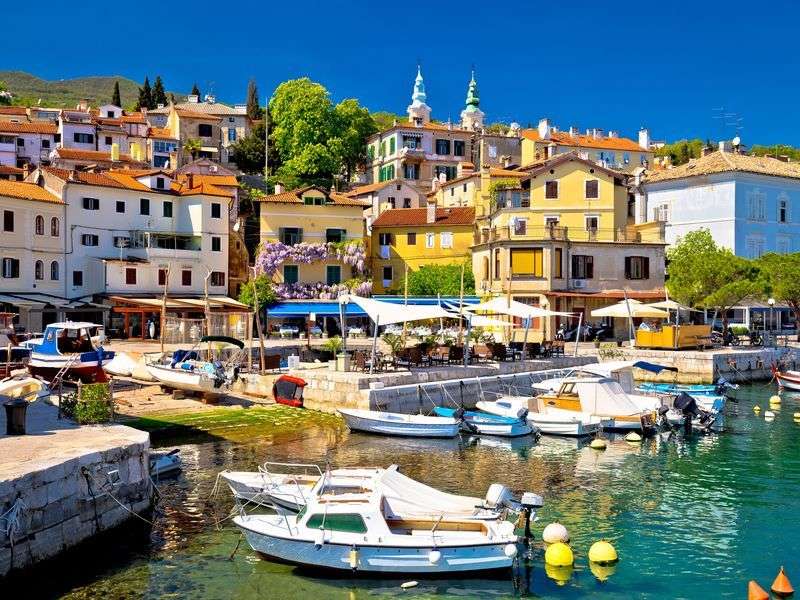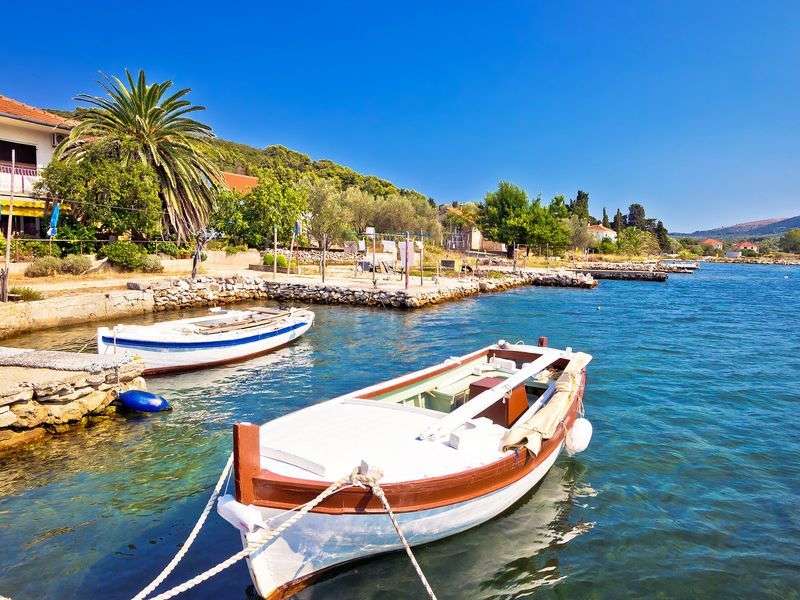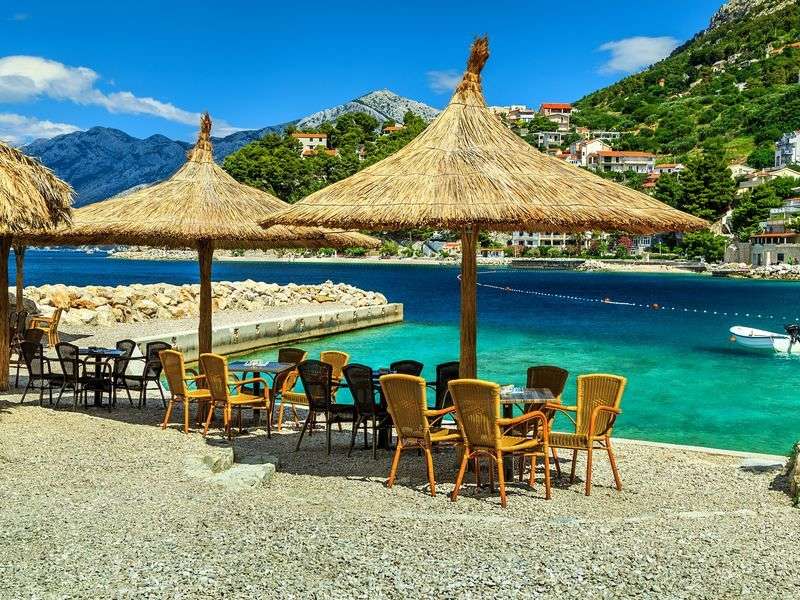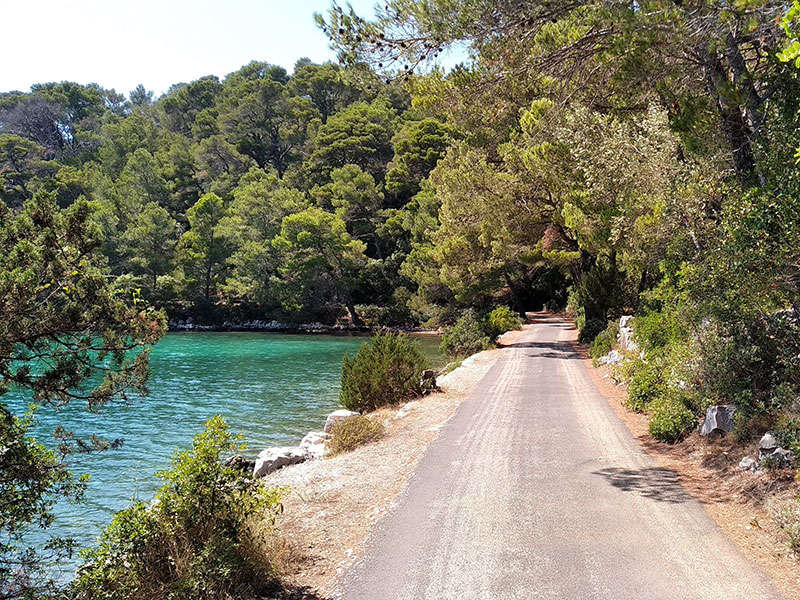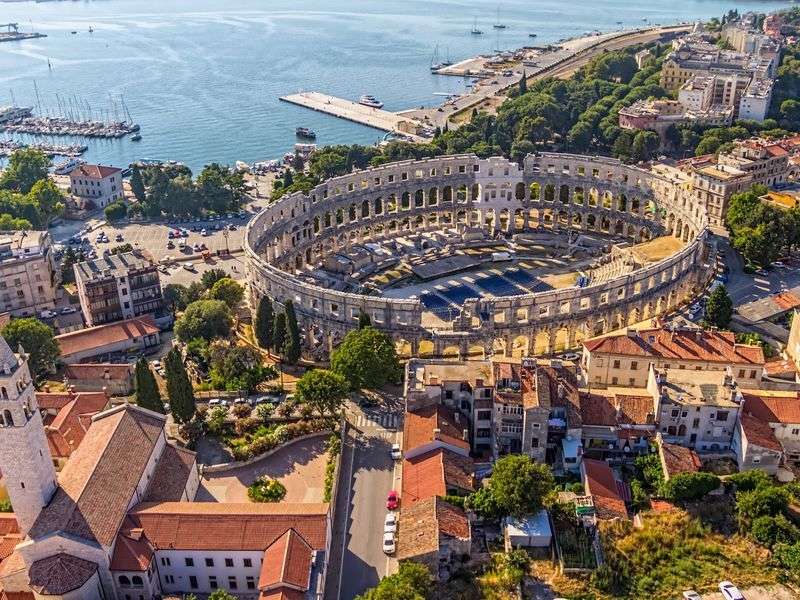Why is it so popular? Blazing sunshine, numerous tiny islands and beaches with crystal clear, pristine waters. Nature reserves, romantic old towns, atmospheric markets, exquisite cuisine… all elements of the splendour of Croatia. Croatia is an easily accessible destination, it’s the most renowned spot amongst boatmen as well. Owing to the regular and reliable northerly and west-northerly winds, everything is given for a marvellous boat trip. But what is there exactly to do in Croatia whilst floating on the warm waters of the Adriatic Sea?
The article includes the followings:
- About the Croatian coastline
- What to do in Croatia? The most stunning islands and beaches
- Things to do in Croatia. The 3 top-ranked Croatian beaches
- What to do in Croatia? Ports and their main attractions
- Things to do in Croatia. 8 symbolic landmarks of Croatia
- Where to find calmer spots or vibrant places bustling with life in Croatia?
About the Croatian coastline
If we only take the length of its coastline, Croatia is an extraordinary country already: it stretches for almost 6, 000 kilometres thus providing an opportunity for visitors to explore its various beaches and hidden coves. With over 1, 000 accessible islands, the number of recreation facilities is practically infinite. On the coastline, the Mediterranean climate dominates, therefore the pleasant weather is granted. The coast can be divided into three main regions. Istria–the largest peninsula of the Adriatic Sea–, Kvarner Gulf fringed with islands and the profoundly Mediterranean Dalmatia.
What to do in Croatia: the most stunning islands and beaches
Croatia is renowned all over the world for its beaches with crystal clear waters of perfect quality. The Croatian coastline of the Adriatic is lined with a lot of splendid sandy and pebble beaches. Owing to their diversity the Croatian beaches offer visitors a unique experience. Many of them have been honoured with the so-called Blue Flag award, which is an international award, and only those beaches can win it that meet the strict criteria.
The 3 top-ranking beaches of Croatia
Nin
The town of Nin is located in close proximity of Zadar, in Zadar County on the Nin peninsula. Most of the peninsula is characterized by its almost exclusively gently sloping, sandy beaches. These beaches count as the most spectacular ones in the whole region. Owing to its uniquely shallow waters, sea temperatures of the peninsula’s coastline tend to be even more pleasant than elsewhere in Croatia. It surely is an ideal place for recreation especially for families or couples who seek peace and tranquillity.
Makarska
The city is probably the most popular holiday resort town on the southern edge of Croatia. Makarska Riviera stretches from the peninsula of St. Peter to the north. The pebbly town beach –that stretches for 2 kilometres– and the town itself are the centres of bender and nightlife. The place where there’s something happening all the time, it’s impossible to get bored. The beach slopes moderately and is thus suitable for all travellers. Thanks to its facilities and neatness it’s also been honoured with the Blue Flag award. For the children, the swimming inflatable bouncy castles offer a lot of water fun in a separate area, whilst the grown-ups can choose between many water sports or enjoy various refreshments in one of the taverns or bars alongside the promenade. After an alluring sunset, a multitude of restaurants, bars and clubs await those who would like to live it up. Read about what to do in Makarska.
Lopar
Paradise Beach in Lopar, on Rab Island, is the most famous and therefore one of the most popular beaches in Croatia. The beach slopes so gently that you can even walk across to the other island in the shallow water. It’s a particularly popular choice among families.
What to do in Croatia? Ports and their main attractions
Croatia is crammed with attractions on the mainland, on water, as well as on the coastline. It’s not surprising in a country with such a rich history and cultural heritage. Most of the ports and coastal metropolises evoke the atmosphere of Venetian and Roman times. The ports are characterized by their distinctive buildings and the often cobbled, romantic alleyways.
By a boat trip, it’s definitely worth visiting some of these towns and attractions. Discover the local bars and restaurants and taste flavours of the Mediterranean cuisine. Most Croatian dishes taste familiar to its neighbour’s across the sea: Italy.
In all fairness and purposes, it doesn’t really matter which part of the Croatian coastline you find yourself on, you can pitch upon such gorgeous little towns as Split, Trogir, Hvar, Zadar, Sibenik or Makarska everywhere.
Things to do in Croatia. 8 symbolic landmarks of Croatia
Zlatni Rat
Zlatni Rat is a pebbly beach in the vicinity of Bol and is one of the most unique stretches of the Croatian coastline. It’s situated on a narrow spit of land on the island of Brac. This is where its name, Golden Cape or Golden Horn, stems from. The area is dotted with lovely coves and olive groves. It’s very popular amongst surfers. Read about what to do in Bol.
Galesnjak Island
The heart-shaped island was first marked in the atlas of Napoleon’s cartographer. With the passing of time, it has gained world-fame as being considered the most impeccable heart-shaped island in the world. Nowadays, the island, which is situated in the middle of the Adriatic Sea, is being referred to as the Croatian ‘Island of Love’.
Mljet National Park
Most of the unspoilt Mljet National Park is feathered with hills and mountains. Mljet is far away from the hustle and bustle of the world. It’s often considered as one of the most picturesque landscapes of Croatia. Thanks to its gorgeous, lush Mediterranean vegetation and oak woods it’s often referred to as the greenest island of the Croatian coastline. Mjet is known for the monastery on an islet on the larger of the two salt-water lakes. It was built-in the 12th century.
Lim Channel
The Lim Channel is a valley, that has been filled up by the sea, situated on the Istria peninsula near Rovinj. The long, curving inlet is often referred to as ‘Lim Fjord’, due to the fact that this natural formation resembles those strips of the sea, formed by glacial erosion. It’s definitely worth a visit. Read about what to do in Rovinj.
Telašćica National Park
The Telascica National Park is located on the southeastern part of the largest island of the Zadar archipelago: Dugi Otok. The nature reserve boasts an incredibly rich flora and fauna as well it is unique geological phenomena. Its southwestern part is characterised by rocky terrain and lush vegetation. The landscape of which is a perfect contrast to the bleak hills and slopes of the opposing side of the peninsula. On top of the over 100 metres high cliff, nestles the enigmatically blue Lake Mir, reflecting the manifold beauty of the cloudless, clear sky.
Porat bay
Bisevo Island is lined with fields, whereas the northern part of it is feathered with pine woods. Its beaches are almost exclusively steep ones and therefore are only accessible from two spots on the western side: the ports of Salbunara and Porat. The most picturesque beach of the island stretches in the sheltered Porat bay, encircled by cliffs. The underwater caves make Bisevo a beloved spot in-between divers as well.
The Blue and the Green Caves
One of the most prominent landmarks of the area is the so-called Green Cave on the Island of Ravnik. Its name stems from the green shade the alga on the cave’s walls lends to it. It is considered to be one of the most stunning rock climbing spots in the world. Only a few kilometres away from the Green Cave is to be found the Blue Cave, on Bisevo Island. The cave’s uniqueness and charm lies in its daylong, magical turquoise glow.
Zlrain Island
Zlarin Island is renowned for its unique festival that takes place annually at the end of July, beginning of August. Zlarinska srdelada, a festival all about sardines. On the island of Zlarin– which is part of the Sibenik archipelago– there will be several grills set up in order to prepare the delicious fish dishes. The island is also famous for being one of the few islands in the Adriatic area without cars.
Where to find calmer spots or vibrant places bustling with life in Croatia?
Peaceful havens
One of the breathtaking, secluded parts of Croatia’s coastline is Stiniva Beach on Vis Island. It was previously featured on the list of the most beautiful European beaches. Quieter, more peaceful spots are Solta, Susak, and the romantic Mljet Island as well. Certain parts of Brac, Cres, Vis and Dugi Otok islands are also ideal for those, seeking isolation and tranquillity.
Where life speeds up
Often called ‘Croatia’s Ibiza’ is Pag Island, more precisely Novalja and Zrce beaches. Several music festivals take place on the island in the summertime.
Hvar Island also offers a bustling nightlife. The bigger cities such as Split or Pula invite visitors with innumerable clubs, bars and restaurants.
Croatia boasts all natural beauties, one can imagine. Beaches, islands, stunning waterfalls, lakes, rivers, gorgeous Mediterranean towns and villages, superb hiking trails, stupendous national parks await all travellers to help to let some steam out. Explore this fantastic country! Croatia is also a perfect base for discovering the coastline of the surrounding countries. Read more if you plan sailing in Croatia or yacht rental in Croatia.

